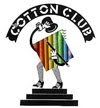What is it? As we understand it, Redwork is a
combination of using red and white fabric, along with some red embroidery. The
era for this stitchery in the US was 1885 to 1935. Designs were stitched on pillow shams,
towels, splashers for washstands, tablecloths, napkins, dresser scarves and
bedcovers. Many were stitched in one color of red cotton thread, known as ‘Turkey
Red,’ on a white linen background.
First seen in Europe the stitchery was called
"Turkey work" referring to the name of the red thread, a color fast
dye (Turkey Red) that had been developed more than 200 years ago, though its
recipe still remains a mystery. This cotton thread became quite popular because
it was color fast and was not nearly as expensive as the silk threads used
during that period.
Redwork patterns began
to come into the US in the form of 6” muslin squares that were printed with
simple patterns in red ink. You could find these squares in any General Store.
The stitching quite simple. In fact they were so easy everyone, young and old,
could do them. These 6” squares became
known as “penny squares” for children to practice their sewing and embroidery
skills.
The majority of the
redwork quilts were made for children and were meant to be used and washed.
These "embroidered picture quilts" often featured pictures that were
of interest to children. The squares were sometimes personalized with the name
of the child or a favorite pet or family member. Other "outline
quilts" were made as presentation quilts, friendship quilts, remembrance
quilts and fund raising quilts that combined embroidered names with stitched
images.
In time women began to
use blue embroidery floss in the same way. This became known as Bluework. One
color for all the blocks in one quilt. Now quilters are taking the designs and
doing both Redwork and Bluework and evolving it many other ways. A local
quilter and longtime co-worker at The Cotton Club has made a wonderful chicken
top drawing of 12 different chickens and embroidering them with red variegated
pearl cotton then using assorted fabric on the pieced corners to form a
connector block.
Redwork continues to
thrive and develop. The white and red
fabrics are not necessarily solid colors – they might have prints on them and
the colors of reds, whites, beiges might vary in value just in one quilt. Some quilts are now even embroidered using
varying shades of red thread as well. However the stitchery and embroidery
designs remain to be quite simple.




